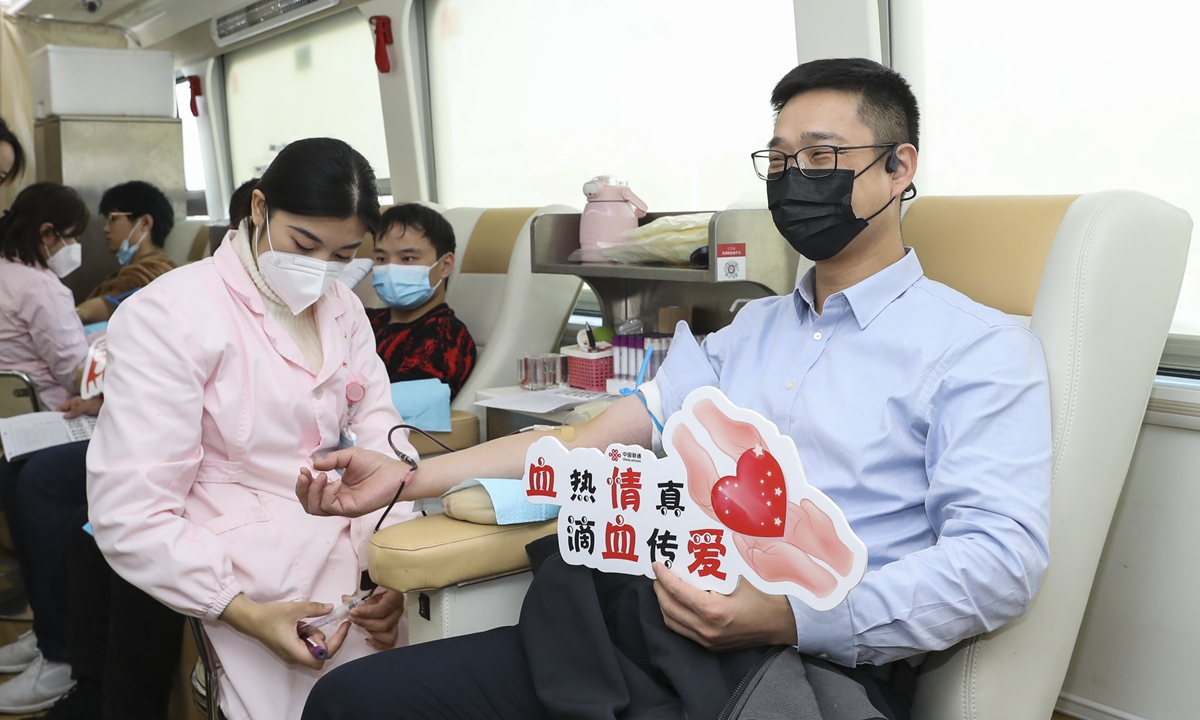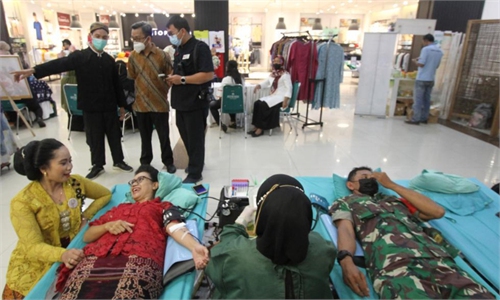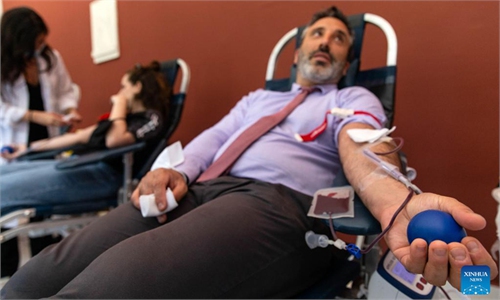
Residents donate blood in Huai'an, East China's Jiangsu Province, on December 15, 2022. Photo: IC
China's National Health Commission on Saturday issued a revised version of guidelines on blood donation, allowing close contacts, secondary close contacts of COVID-19 infections as well as recovered COVID-19 patients to donate blood.
Compared with the first version of the guidelines, the revised guidelines on prevention and control of COVID-19 infection at blood stations removed the requirement that close contacts and secondary close contacts of COVID-19 infections as well as people who traveled to medium- and high-risk areas shouldn't donate blood.
Also, based on international practices and Chinese conditions, people who have infected with COVID-19 (except for severe and critical cases) can donate blood seven days after their last positive results of nucleic acid test or antigen test.
Patients with severe or critical conditions can donate blood six months after their recovery, the revised guidelines said.
The revised guidelines also said that people inoculated with recombinant protein vaccines or inactivated vaccines shouldn't donate blood within 48 hours.
According to the guidelines, no transmission of COVID-19 through blood transfusions has been reported in the world. However, in order to ensure safety, blood donors need to report to blood stations within 48 hours about their infection of COVID-19.
Multiple places across the country, including East China's Jiangsu, Jiangxi and Shandong provinces, Kunming in Southwest China's Yunnan Province and Changchun in Northeast China's Jilin Province have been suffering from shortage of blood due to the adverse factors such as epidemic prevention and control and cold fronts, which have led to a sharp drop in blood donation, according to thepaper.cn.
The revised guidelines were optimized and adjusted in accordance with the latest measures of epidemic prevention and control and taking into account the actual working conditions of blood stations, specifying on all aspects of blood donation, including personnel protection, workplace cleaning and disinfection, medical waste disposal, blood donor selection and management, blood collection and supply process and laboratory testing.
Global Times


